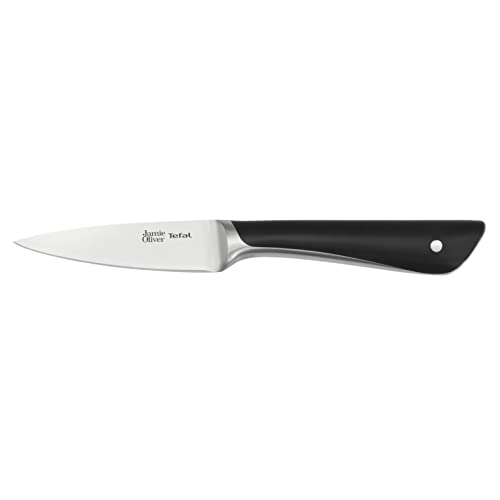Understanding the Purpose of a Paring Knife
A paring knife is a small, sharp knife that is designed for tasks that require precision and control. It is commonly used for peeling and trimming fruits and vegetables, as well as other intricate cutting tasks. Because of its frequent use and delicate nature, proper maintenance is essential to keep a paring knife in optimal condition.
Cleaning a Paring Knife
Cleaning a paring knife after each use is crucial to prevent the buildup of food particles and bacteria. It is recommended to wash the knife by hand using warm, soapy water, as well as a non-abrasive sponge or cloth. Avoid using harsh cleaning agents or abrasive materials, as these can damage the blade. Once washed, thoroughly dry the knife to prevent rusting.
Sharpening and Honing a Paring Knife
Regular sharpening and honing will help maintain the sharpness and cutting performance of a paring knife. Sharpening refers to the process of reestablishing the knife’s edge, while honing is used to realign and maintain the edge between sharpenings.
There are several methods for sharpening a paring knife, including using a sharpening stone, a honing rod, or an electric knife sharpener. Whichever method you choose, it is important to follow the manufacturer’s instructions and maintain the proper angle while sharpening.
Honing a paring knife can be done more frequently than sharpening, as it helps to maintain the knife’s edge between sharpenings. To hone a paring knife, use a honing rod or a honing steel and gently swipe the blade against it at a 15-20 degree angle, alternating sides until the knife feels sharp again.
Storing a Paring Knife
Proper storage of a paring knife is important to prevent accidental damage and ensure its longevity. Avoid tossing the knife in a drawer or leaving it exposed on a countertop, as this increases the risk of injury and can cause the blade to dull more quickly.
It is recommended to use a knife block, magnetic strip, or knife guard to store the paring knife safely. These storage options keep the knife secure and protect the blade from coming into contact with other utensils or surfaces that could potentially damage it.
Additional Tips for Maintaining a Paring Knife
Aside from regular cleaning, sharpening, and proper storage, there are a few additional tips to keep in mind when maintaining a paring knife.
First, avoid using the paring knife on hard or frozen foods, as this can cause the blade to chip or break. Instead, use a more robust knife for these tasks.
Second, be mindful of how the knife is used and stored. Avoid cutting on hard surfaces, such as glass or granite, as this can dull the blade. Additionally, be cautious when handling the knife to prevent accidentally dropping or mishandling it, which can damage the blade or cause injury.
Lastly, if the paring knife has wooden handles, it is important to periodically oil and condition them to prevent cracking and drying out. This can be done using food-safe mineral oil or specialized wood conditioning products.






